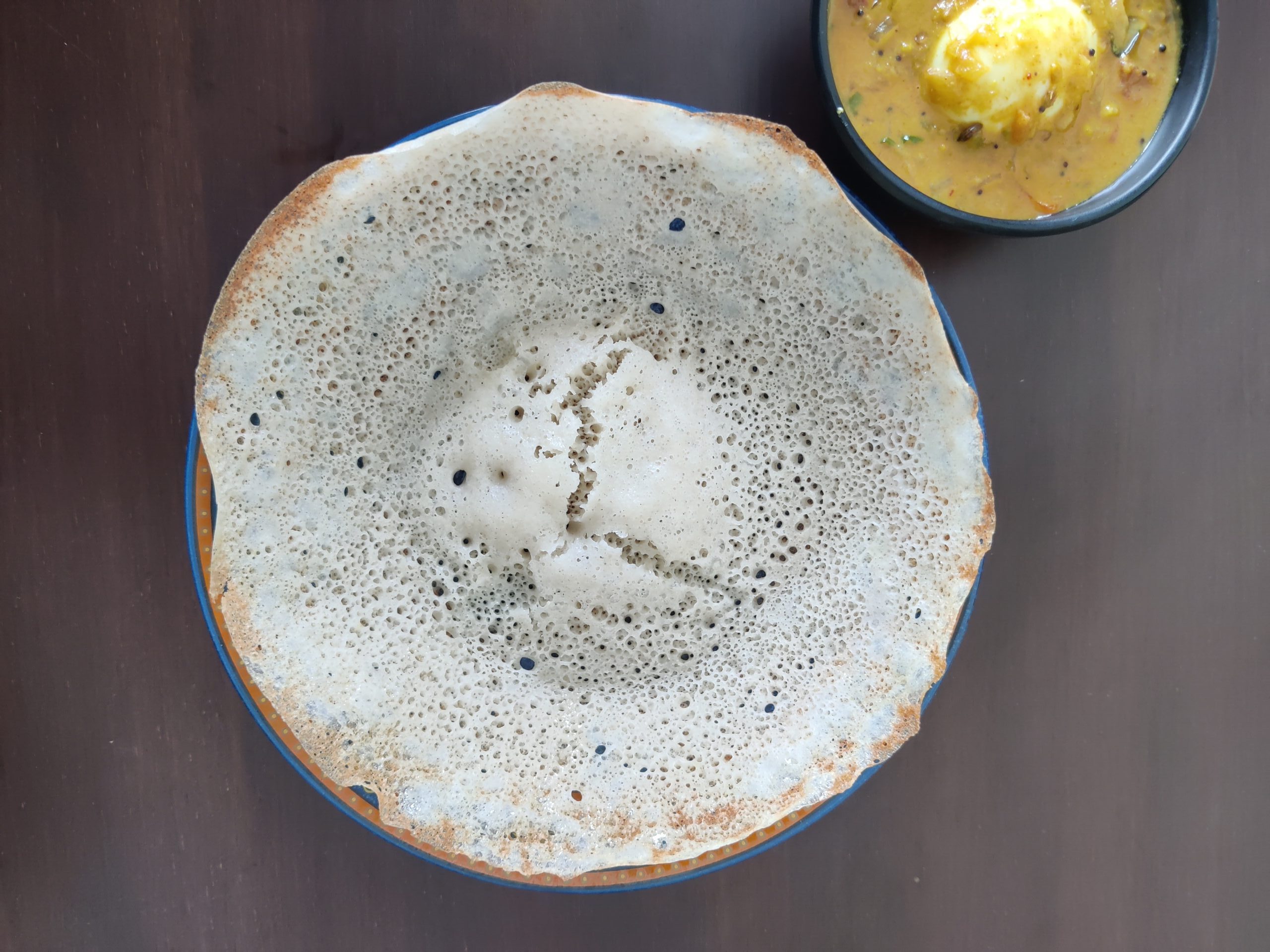
| Idli rice | 1 cup |
|---|---|
| Kodo Millet | 1 cup |
| Fenugreek Seeds | 1 tablespoon |
| Rice (cooked) | 3 tablespoons |
| Water (refrigerated) | 1.5 cups (approximately) |
| Sugar | 1/2 teaspoon |
| Baking Soda | 1/2 teaspoon |
| Salt | 1 1/2 tablespoon |
| Oil | For greasing |
What You Will Need
A mixer grinder, two mixing bowls, a small bowl, a large bowl (not metal), an appam kadhai or appam chatti with a lid, a spoon.
Instructions
For the Batter:
Wash the kodo millet in water at least three to four times, scrubbing the millet well each time, until the water runs clean.
Use a mixing bowl to soak the kodo millet in water for five to six hours.
In a separate mixing bowl, soak the idli rice for five to six hours.
Use a separate, small bowl to soak the fenugreek seeds for five to six hours as well.
Drain the water from the kodo millet, the idli rice, and fenugreek seeds. Add the drained millet and seeds to a mixer grinder, then add 100 to 150 millilitres of the refrigerated water to the mixture.
Grind at the lowest speed of the mixer grinder for one minute.
Now add the idli rice and 50 to 60 millilitres of the refrigerated water to the kodo batter and grind again at the lowest speed for another minute.
Finally, add the cooked rice to the mixer grinder and continue grinding until the batter achieves a smooth consistency. Take frequent breaks between grinding to ensure the mixer grinder doesn’t heat up. This is why using refrigerated water helps.
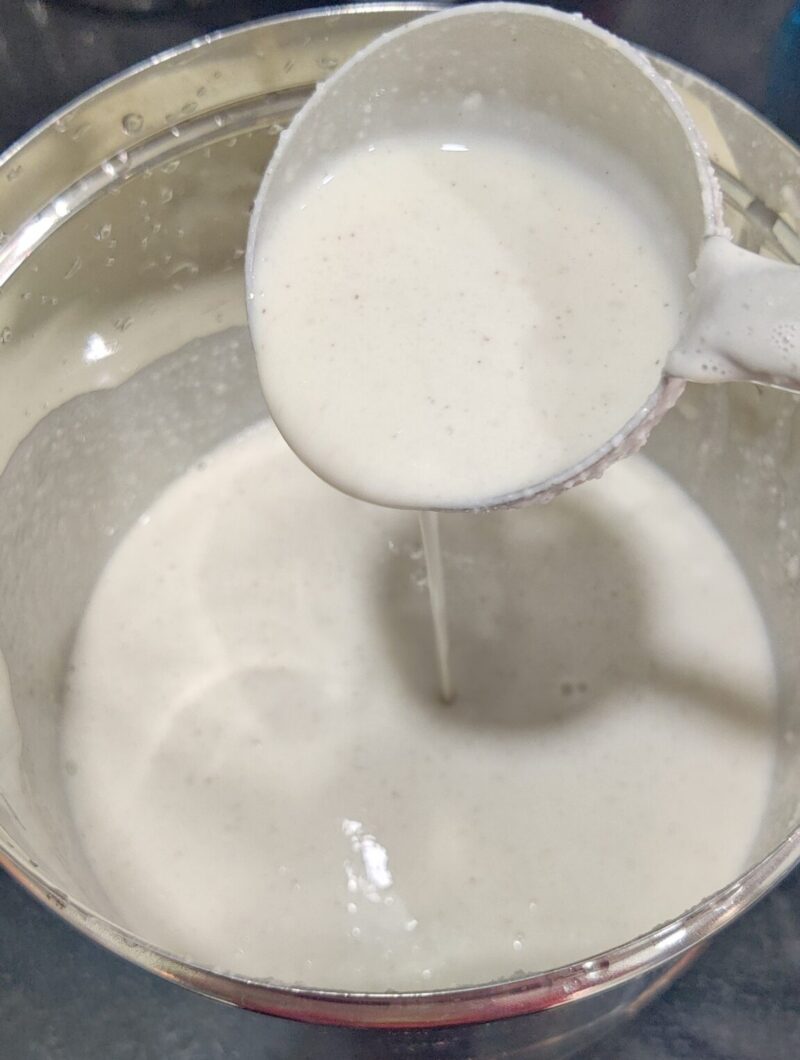
Transfer the batter to a large bowl (preferably glass, earthen, or ceramic), which can accommodate at least twice the original volume of the batter.
Add ¾ tablespoon of salt to the batter and let it ferment at room temperature (25 to 35 C) for 8 to 12 hours. A well fermented batter will increase to twice its initial volume, and appear frothy on the top.
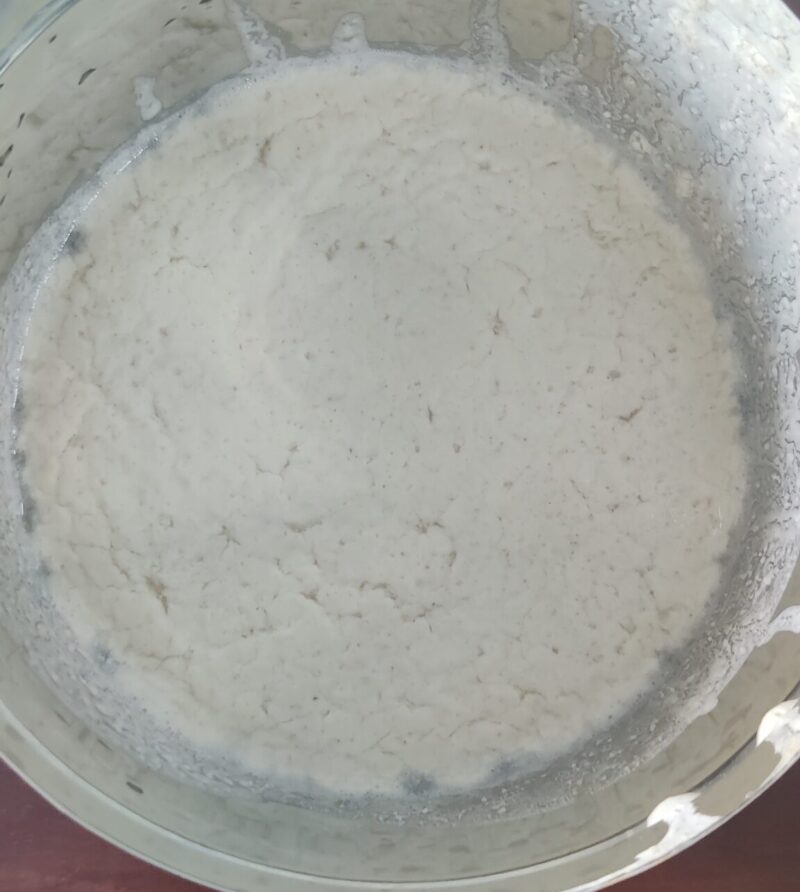
Add the remaining ¾ tablespoon salt and sugar to the fermented batter and mix well. The consistency of the batter should be a little more runny than dosa batter.
The batter can now be used for making appams, or refrigerated for future use. However, consume it within 36 hours of grinding to maintain the correct taste and texture.
For the Appam:
Transfer the required quantity of batter to a large bowl, and add between ⅛ teaspoon to ¼ teaspoon of baking soda to the batter based on the quantity used. Mix well.
Turn on the burner to medium high, and heat the appam chatti. Dab a kitchen tissue or cloth with cooking oil and rub the insides of the appam chatti with it once the chatti is hot.
Reduce the heat to low, then add 1 to 1 ½ ladles of the batter to the chatti. Rotate the chatti in a slow circular motion so that the batter smoothly coats the entire chatti.
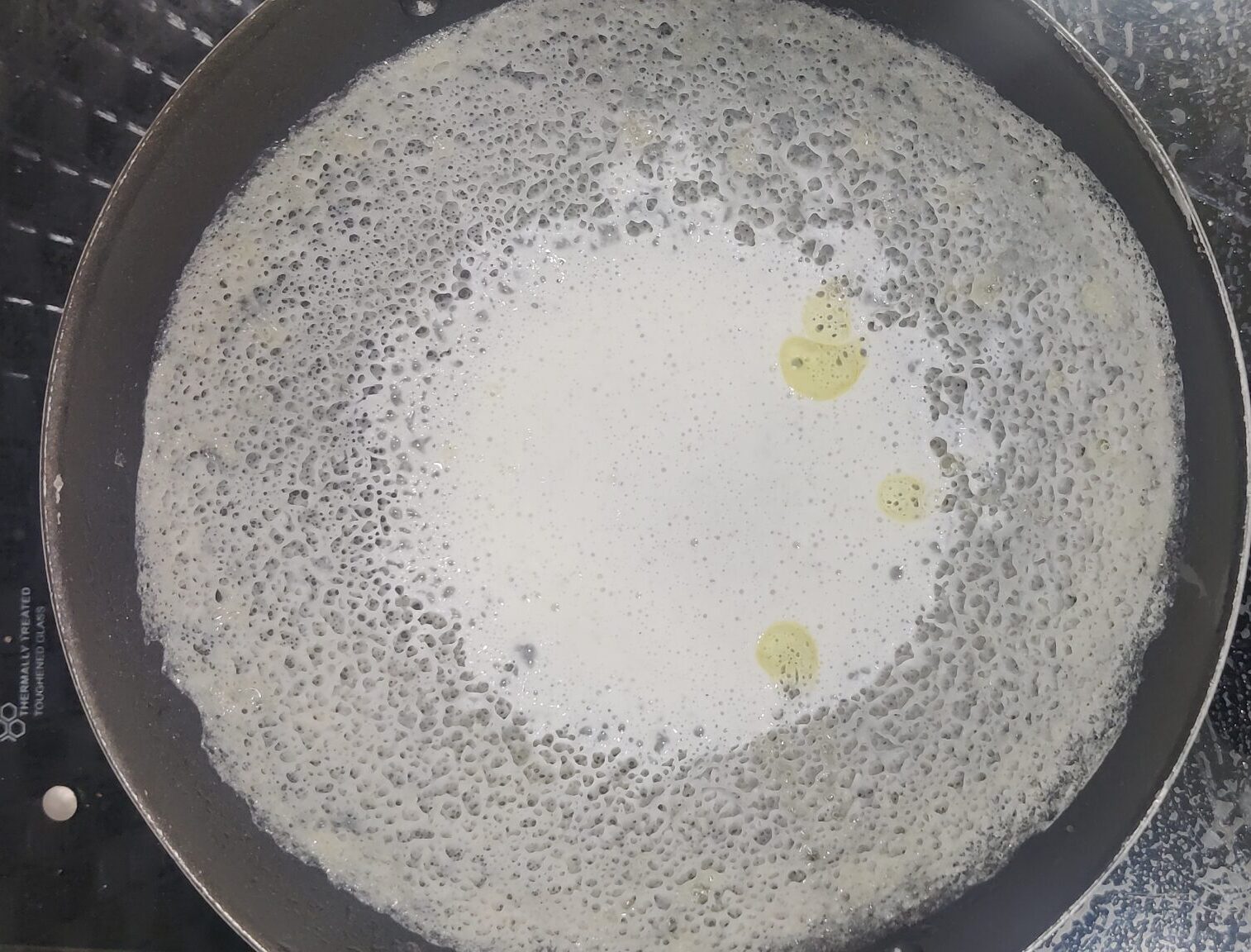
Cover the chatti with the lid and cook for about a minute.
On cooking, the appam will look soft and fluffy in the center and golden-brown on the sides.
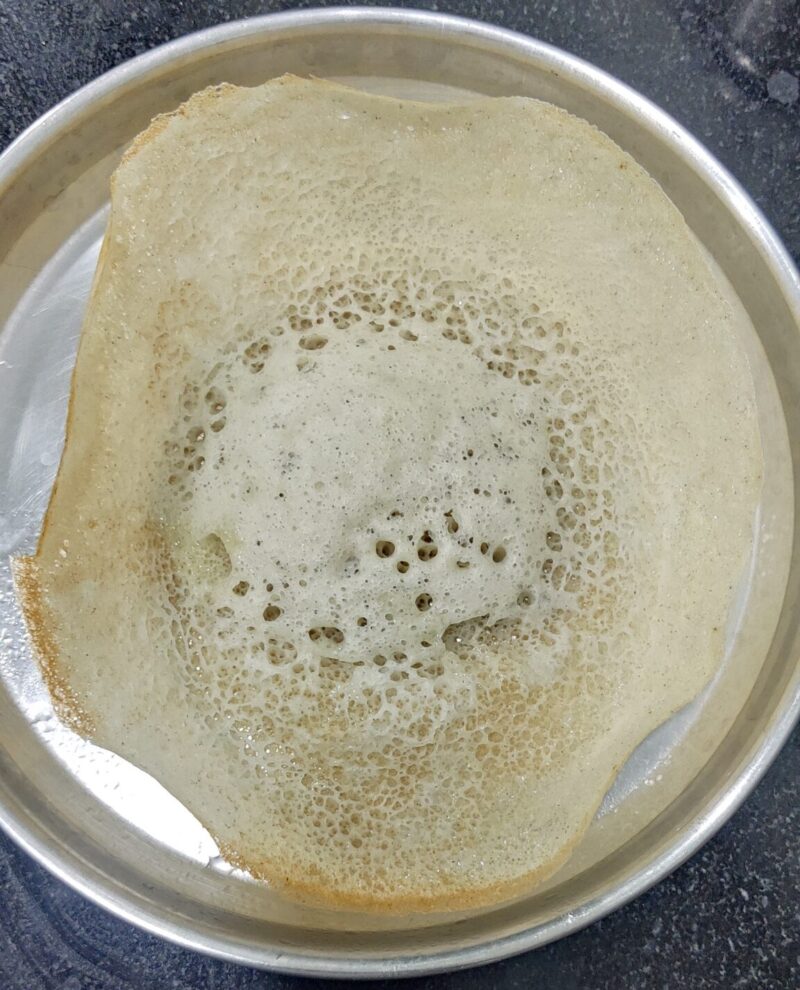
Remove from the appam chatti and serve with a side of your choice.
Tips
- Grind the appam batter in two or three batches if your mixer grinder cannot accommodate all of the soaked ingredients, then mix all the batches together into a single bowl.
- The batter thickens slightly in consistency upon fermentation. The ground batter should feel slightly more runny than dosa batter. To make it so, start by adding a small quantity of water, and attempt to make an appam. Then add more water to adjust the consistency if needed. The ideal batter will flow easily in the appam chatti upon rotating it, and spread uniformly over the surface without accumulating at the center.
Variations
- You can add one or two tablespoons of fresh coconut, smoothly ground, to the batter, just before making the appams.
- Crack open an egg at the center of the appam before covering the chatti with a lid to make an egg appam. You could also whisk an egg into some leftover chicken gravy before adding it to the appam. But try this variation only after perfecting the first few appams.
Sharada started cooking when she was 14, and there has been no looking back since! Her culinary passion lies in reviving traditional recipes with a contemporary twist, and she delights in incorporating seasonal, locally-sourced produce in innovative and imaginative ways. She proudly shares her cooking experiments on Instagram: @adupangarai_aroma.
You must be logged in to rate this recipe.

Sign in with email
